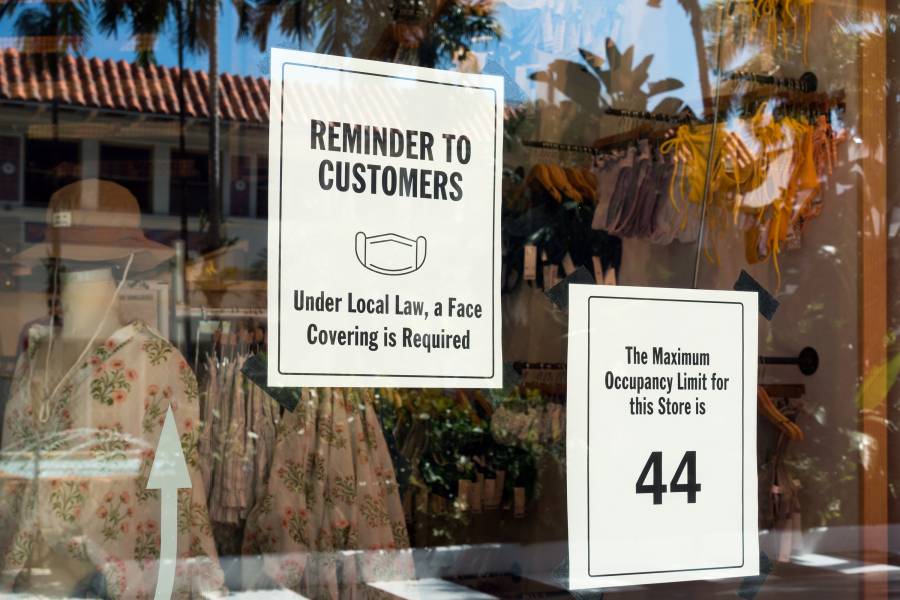When the coronavirus pandemic reached the United States last year, the lockdowns and emergency orders that came with it sent shock waves through the country's retail markets. Mandatory closures sent some retailers scrambling for new ways to reach customers and fulfill online orders while others did their best to weather devastating revenue losses with no foreseeable end in sight.
While brick-and mortar stores struggled, however, e-commerce revenue skyrocketed in 2020, growing 44% last year. Even as retail revenue overall grows in the U.S., these trends signal a change in American consumer habits, and astute business professionals are taking note—and adapting.
In a new series launched by the Johns Hopkins Carey Business School, experts and industry leaders discuss challenges and innovations in real estate—including, of course, the effects of the COVID-19 pandemic. On Wednesday, Johns Hopkins alum Jeffrey Olson will join Carey Dean Alex Triantis as part of the speaker series, titled Disruption in Real Estate. Olson, chairman and CEO of Urban Edge Properties, is an expert in managing, acquiring, developing, and redeveloping retail real estate in urban communities.
Ahead of his talk, the Hub reached out to Olson for a better understanding of how the coronavirus pandemic has affected real estate markets, what that means for the average consumer, and what the future of the industry might look like.
How does the retail real estate market affect the average consumer?
Shopping centers with the right tenant mix become an important part of a local community by providing consumers with an engaging place to shop, dine, work out, or take care of essential needs such as a visit to the doctor or dentist. They also support the creation of jobs and new businesses, which ultimately benefit those in the surrounding area.
How did you get involved in the retail real estate market?
My first job out of college was with a mall developer outside of Washington, D.C. They actually funded my master's program at Johns Hopkins back in the early 1990s. So that's how I got affiliated with Hopkins. And I've been in the industry since then.
We know right now that because of low inventory, low interest rates, and high demand, the residential real estate market is experiencing a boom. What is the state of the retail real estate market right now?
During COVID-19, the retail real estate industry was significantly challenged. Most retailers, other than essential businesses, were closed and rent collections suffered. The investment sales market was basically frozen due to lack of financing and general uncertainty.
However, this has all changed as businesses have reopened and the vaccine has been widely distributed. Our retailers are generating strong results and we are seeing robust leasing activity. Retailers that thrived in COVID-19—grocers, discounters, wholesalers, drug stores, and others—are seeking to grow and small businesses such as restaurants are looking for space as they grow more confident that the worst is behind us.
We've also seen a notable uptick in transaction activity in the last four to five months as financing markets have opened up. Investments have been concentrated in higher quality grocery-anchored shopping centers, but we expect to see activity continue to grow for other retail assets such as power centers as institutions and investors realize that these assets survived the pandemic largely intact. The exception is likely to be malls, which remain challenged due to their high operating costs and the decline of traditional mall anchors.
Lastly, a big trend that we are seeing is a convergence between the retail sector and the industrial sector both in terms of usage and rents. First, as e-commerce has become the growth engine for many of our tenants, they are increasingly using their physical stores for last mile fulfillment—Target, Walmart, and grocers being good examples. Second, demand for industrial space has increased so much within the New York metro area that industrial rents are now almost the same as retail rents. Historically industrial rents have been a fraction of retail rents.
Beyond COVID-19, how else is the retail real estate market responding to disruption in the industry? What should forward-looking people in real estate be doing or thinking about right now?
There's probably too much retail space throughout the country, especially in areas where there are no supply constraints and a lack of population density around your retail real estate. In those areas, I'd suggest that owners need to evaluate the highest and best use of their assets which may include reducing or repurposing existing retail space. In our portfolio, we're looking at adding residential, medical office, self-storage, and industrial components. In fact, we're converting one of our shopping centers to a hybrid industrial facility that will provide the tenant with a retail space as well as a wholesale distribution facility. We've also converted underutilized spaces and parking fields to self-storage. So to the extent that we can find other uses—especially where those uses allow us to build vertically and maximize our land—we're doing it.
Posted in Voices+Opinion, Politics+Society, Alumni
Tagged business, real estate










